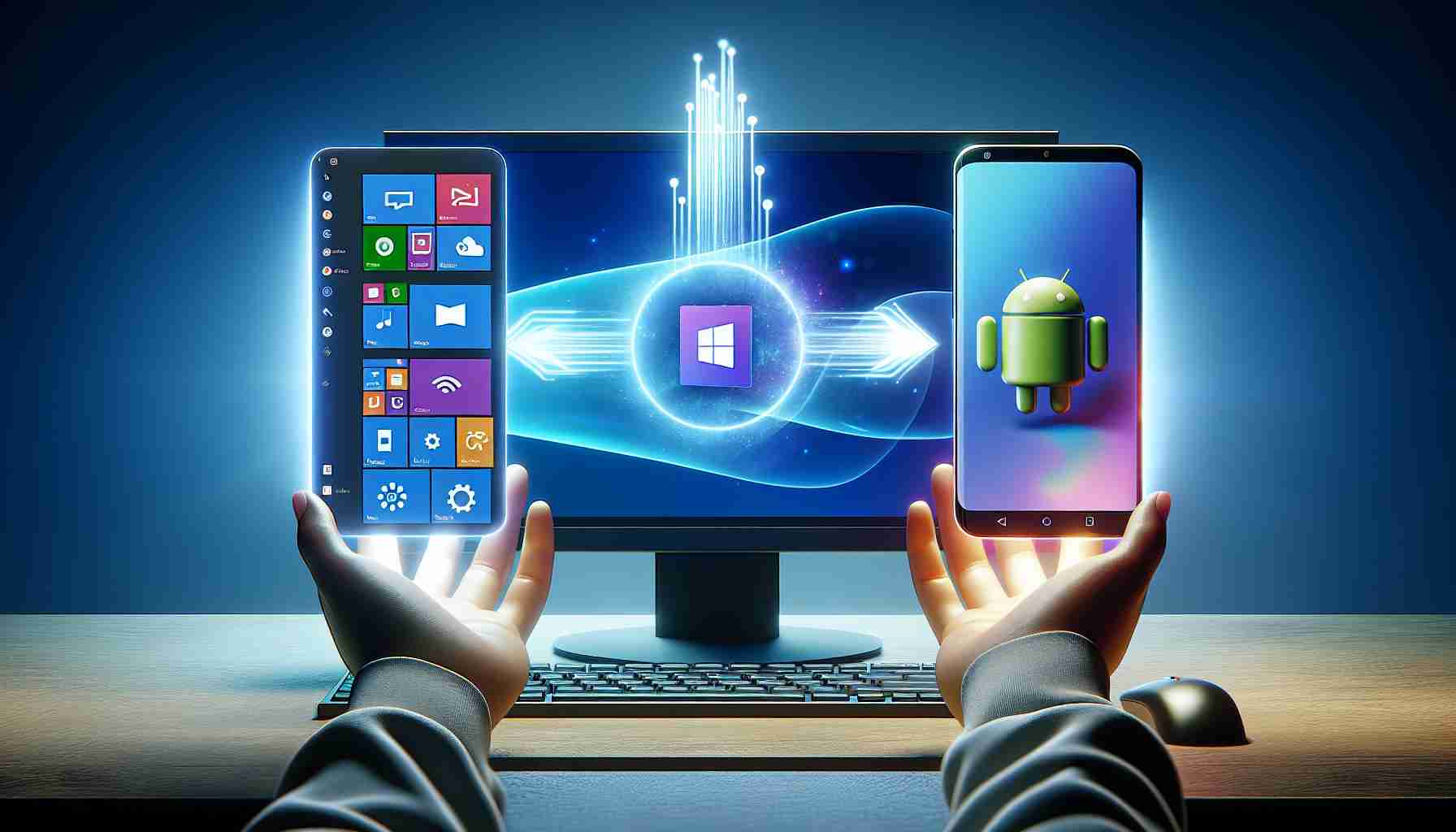Microsoft Revolutionizes PC-Smartphone Synchronization
In Microsoft’s latest initiative to streamline workflow between personal computers and mobile devices, an innovative update to the Phone Link app is set to significantly enhance user productivity. Windows 11 will soon allow users to seamlessly browse and manage their Android smartphone files directly from the Windows Explorer interface.
The upcoming feature is designed to simplify the process of file management, much like how an external hard drive might function when connected to a computer. Microsoft’s profound integration will render the need to manually launch the Phone Link app obsolete. This convenience is akin to a digital handshake between the two platforms.
What makes this feature even more user-friendly is the addition of a sidebar shortcut within Windows 11 Explorer. This development was highlighted by a notable user (@PhantomOnEarth) in an online tech community, ‘X’. A single click on this new shortcut will reveal all the contents of the connected Android device, ready to be transferred or managed directly from the PC.
To embrace this new level of connectivity, Windows 11 users will be required to adjust a few settings. The process involves toggling specific options in the Settings app to establish a wireless bridge for file access through the Phone Link and Cross Device Experience Host services.
Although still under rigorous testing, some individuals may soon be able to enjoy an early look at these capabilities through Dev and Beta versions of Windows 11. As testing concludes and refinements are made, Microsoft plans to unveil this feature to the broader user base with compatible hardware configurations, marking a new milestone in PC-smartphone synergy.
The mention of a new integration feature for Windows 11 that aims to enhance synchronization with Android smartphones highlights the ongoing endeavours by Microsoft to improve the cross-functionality between different devices and platforms. To expand on the topic, it’s pertinent to understand both why this integration is significant and the broader context of such efforts.
Key Questions & Answers:
1. Why is Microsoft focusing on integrating Android smartphones with Windows 11?
Microsoft does not have a significant presence in the smartphone operating system market since the discontinuation of Windows Mobile. By integrating Android devices with Windows 11, Microsoft ensures that its large user base can enjoy a seamless experience across the devices they use most frequently, thereby enhancing user retention and satisfaction.
2. How will this feature impact productivity?
The integration will save time and streamline workflows by allowing users to access and manage phone files directly from their PC, reducing the need to switch devices to complete tasks.
Key Challenges & Controversies:
– One of the challenges includes ensuring privacy and security when devices are interconnected. Robust security measures must be in place to prevent data breaches.
– Another challenge involves ensuring compatibility across various Android device manufacturers which often have their own custom interfaces and functionalities.
Advantages:
– Increased Productivity: Users can quickly transfer files without needing to email them to themselves or use a cloud service.
– Convenience: The ability to manage files from a PC can simplify tasks such together as organizing photos or editing documents that originated on the phone.
– Continuity of Experience: Users will have a more unified experience across their devices.
Disadvantages:
– Compatibility Issues: Some features may not work as expected with all Android smartphones, especially older models.
– Complexity: The process of establishing a wireless bridge might be intimidating to less tech-savvy users.
Considering the ever-advancing integration of operating systems and devices, it’s also beneficial to look into related services or precedents in the technology sector. For example, Apple’s macOS and iOS devices have long benefitted from similar integration with features like Handoff, which allows effortless continuity between devices. Google’s ecosystem also touts synchronization features between Android and Chrome OS on Chromebooks.
To further explore these topics from reliable sources, it would be pertinent to visit official domains such as Microsoft for information on Windows 11 features, Apple for details on macOS and iOS integration, and Google for insights into Android and Chrome OS synergies.
As the integration feature is still under development, details will continue to emerge, and actual user experiences will ultimately determine the feature’s true impact and functionality.
